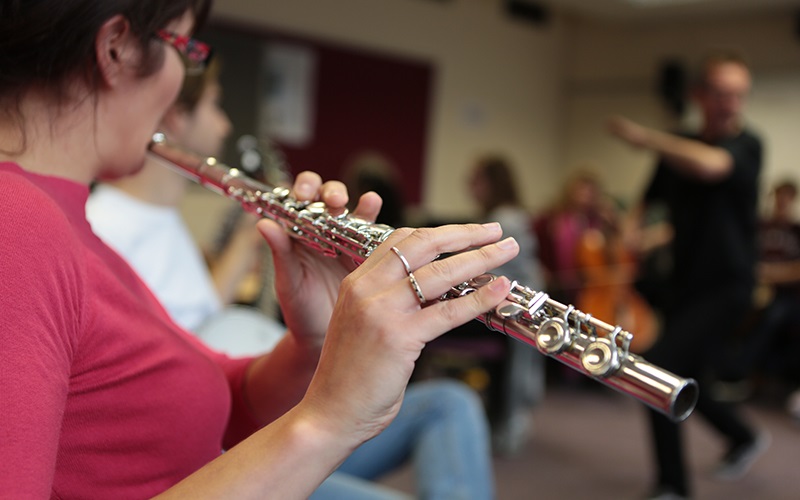The melody of music should resonate with every student, regardless of background or ability. Inclusive music programs create a welcoming space where all students can experience the joy of music making and reap the benefits of music education. Here’s how to create a school music program that empowers all students to participate and thrive.
The Universal Language of Music:
Music transcends barriers and has the power to connect individuals on a deep emotional level. Inclusive music education ensures that every student, including those with disabilities or learning differences, has the opportunity to:
- Express Themselves Creatively: Music provides a safe space for self-expression, regardless of verbal skills. Through music, students can explore their emotions, communicate ideas, and build confidence.
- Develop Social and Emotional Skills: Ensemble work fosters collaboration, teamwork, and communication skills. Music can also be a powerful tool for managing emotions and improving social interaction.
- Enhance Cognitive Skills: Music stimulates brain development, improving memory, focus, and critical thinking skills. This can benefit students with learning differences and contribute to their overall academic success.
Building Bridges to Participation:
- Universal Design for Learning (UDL): Apply UDL principles to create flexible learning environments that cater to diverse learning styles and abilities. This might involve offering a variety of instruments, differentiated instruction, and alternative ways to participate in musical activities.
- Assistive Technology: Integrate assistive technology like adapted instruments, music software with visual aids, or amplification devices to ensure all students can actively participate in music making.
- Music Therapy: Explore the power of music therapy! Music therapists can work with students with special needs to create individualized music experiences that address specific challenges and promote overall well-being.
- Differentiation is Key: Adapt instruction and activities to meet the needs of all learners. Provide opportunities for individual expression and celebrate the unique strengths of each student.
Fostering a Culture of Acceptance:
- Positive and Encouraging Environment: Create a classroom environment that is inclusive, respectful, and celebrates diversity. Encourage students to support and learn from each other.
- Collaboration with Teachers: Music teachers should collaborate with special education teachers and other specialists to develop a comprehensive plan to support students with diverse needs.
- Parental Involvement: Partner with parents to understand their child’s strengths and challenges, and work together to create a successful music learning experience.
Beyond the Classroom Walls:
- Community Partnerships: Collaborate with local music organizations or disability advocacy groups to offer inclusive music workshops, performance opportunities, or instrument donation programs.
- Professional Development: Provide music teachers with opportunities for professional development in inclusive music education strategies and the use of assistive technology in the music classroom.
The Symphony of Success: A Brighter Future for All
By creating inclusive music programs for schools, we ensure that every student has the opportunity to experience the transformative power of music. This investment fosters a love of music, strengthens social-emotional development, and empowers all students to reach their full potential. Let’s create a musical world where everyone can join the orchestra and play their own unique melody.

